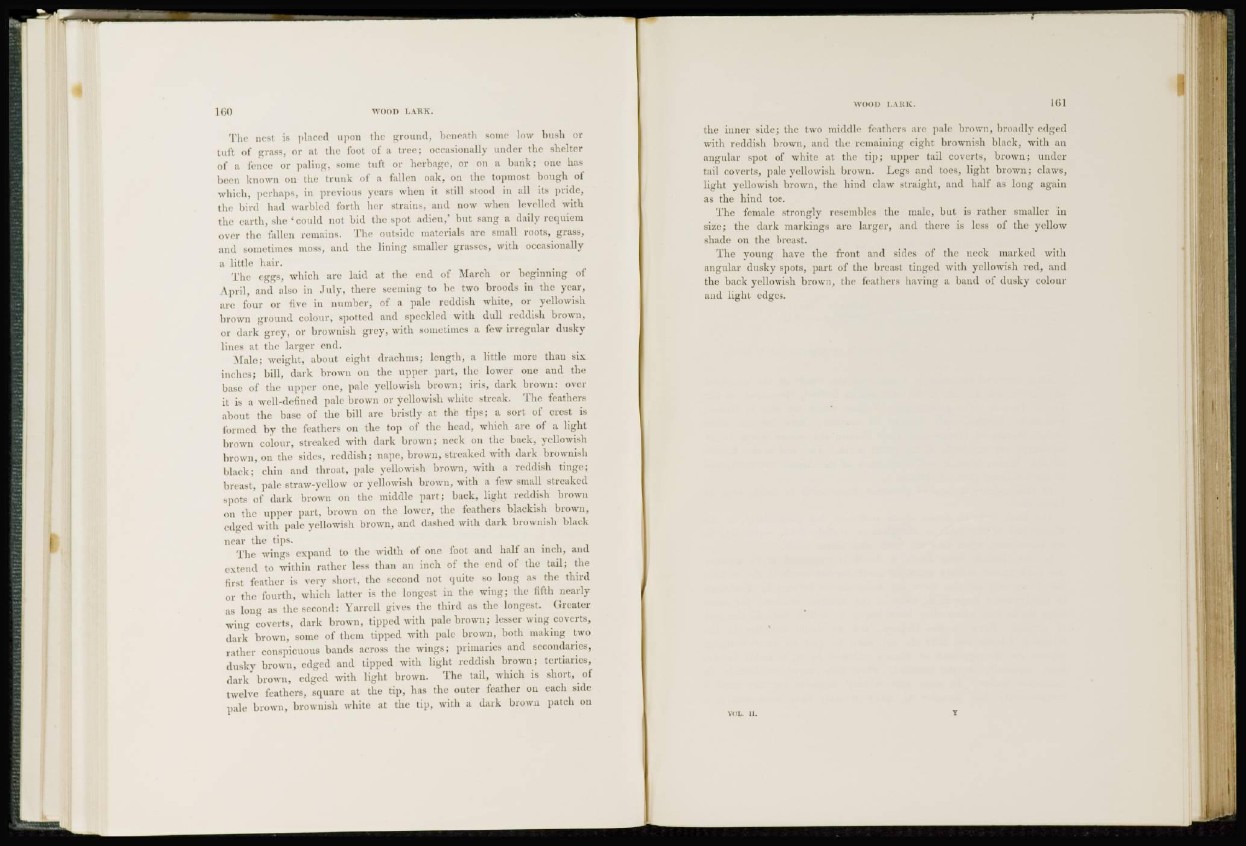
Tin* nest is placed upon the ground, beneath some low bush or
tuft of grass, or at the fool of a tree; occasionally under the shelter
of a fence or paling, some tuft or herbage, or on a bank; one has
been known on tin! trunk of a fallen oak, on the topmost bough of
which, perhaps, in previous years when it still stood in all its pride,
the bird had warbled forth her strains, and now when levelled with
the earth, she 'could not bid the spot adieu,' but sang a daily requiem
over the fallen remains. The outside materials are small roots, grass,
and sometimes moss, and the lining smaller grasses, with occasionally
a little hair.
The eggs, which arc laid at the end of March or beginning of
April, and also in July, there seeming to be two broods in the year,
are four or five in number, of a pale reddish white, or yellowish
brown ground colour, spotted and speckled with dull reddish brown,
or dark grey, or brownish grey, with sometimes a few irregular dusky
lines at the larger end.
Male; weight, about eight drachms; length, a little more than six
inches; bill, dark brown on the upper part, the lower one and the
base of the upper one, pale yellowish brown; iris, dark brown: over
ii is a well-defined pale brown or yellowish while streak. The feathers
about the base of the bill are bristly at the tips; a sort of crest is
formed by the feathers on the top of the head, which are of a light
brown colour, streaked with dark brown; neck on the back, yellowish
brown, on the sides, reddish; nape, brown, streaked with dark brownish
black; chin and thro.it, pale yellowish brown, with a reddish tinge;
breast, pale straw-vellow or yellowish brown, with a few small streaked
s p o t s of dark brown on the middle part; back, light reddish brown
on the upper part, brown on the lower, the feathers blackish brown,
edged with pale yellowish brown, and dashed with dark brownish black
near the tips.
The wings expand to the width of one foot and half an inch, and
extend to within rather less than an inch of the end of the tail; the
first feather is very short, the second not quite so long as the third
or the fourth, which latter is the longest in the wing; the fifth nearly
as long as the second: Yarrcll gives the third as the longest. Greater
wing coverts, dark brown, tipped with pale brown; lesser wing coverts,
dark brown, some of them tipped with pale brown, both making two
rather conspicuous bands across the wings; primaries and secondaries,
dusky brown, edged and tipped with light reddish brown; tertiarics,
dark brown, edged with light brown. The tail, which is short, of
twelve feathers, square at the tip, has the outer feather on each side
pale brown, brownish white at the tip, with a dark brown patch on
the inner side; the two middle feathers are pale brown, broadly edged
with reddish brown, and the remaining eight brownish black, with an
angular spot of white at the tip; upper tail coverts, brown; under
tail coverts, pale yellowish brown. Legs and toes, light brown; claws,
light yellowish brown, the hind claw straight, and half as long again
as the hind toe.
The female strongly resembles the nude, but is rather smaller in
size; the dark markings arc larger, and there is less of the yellow
shade on the breast.
The young have the front and sides of the neck marked with
angular dusky spots, part of the breast tinged with yellowish red, and
the back yellowish brown, the feathers having a baud of dusky colour
and light edges.